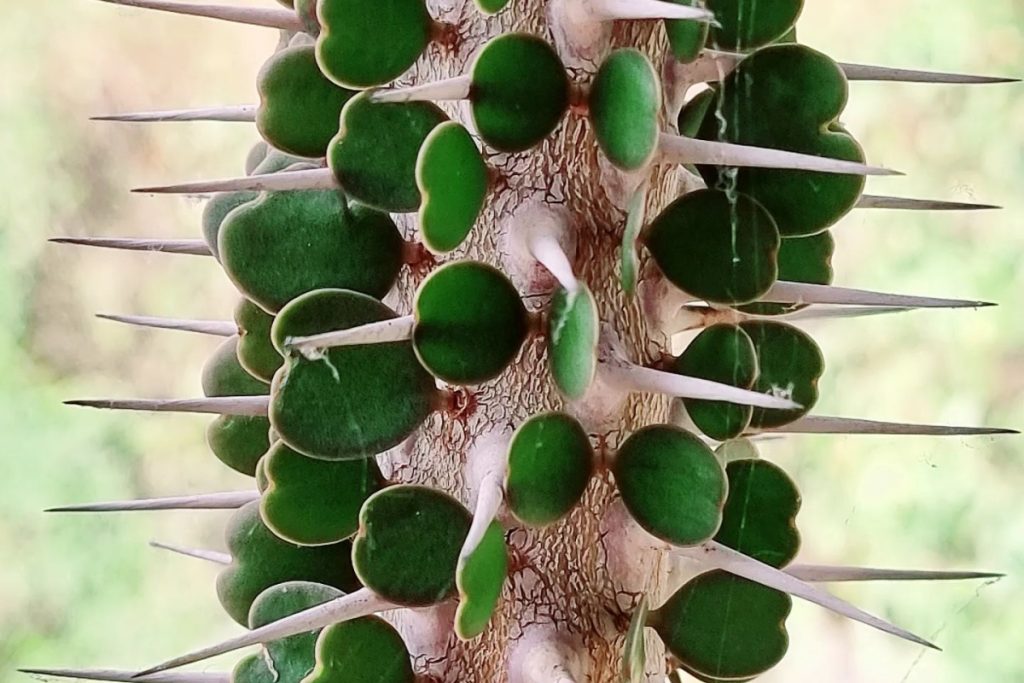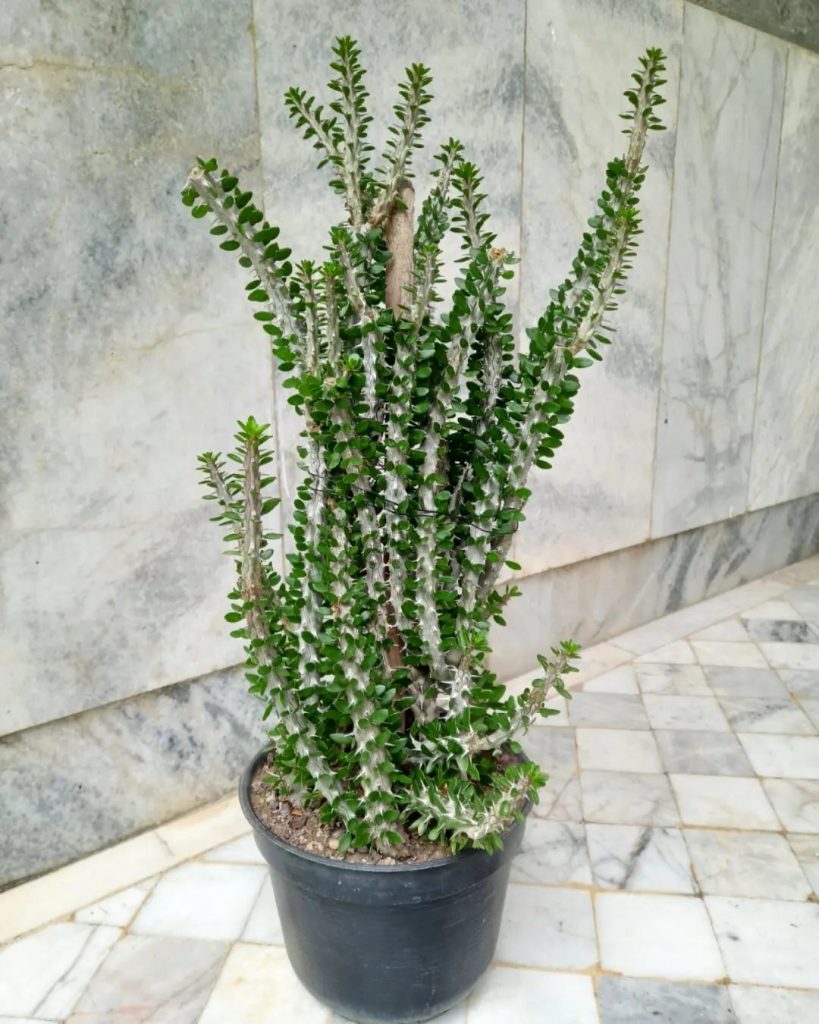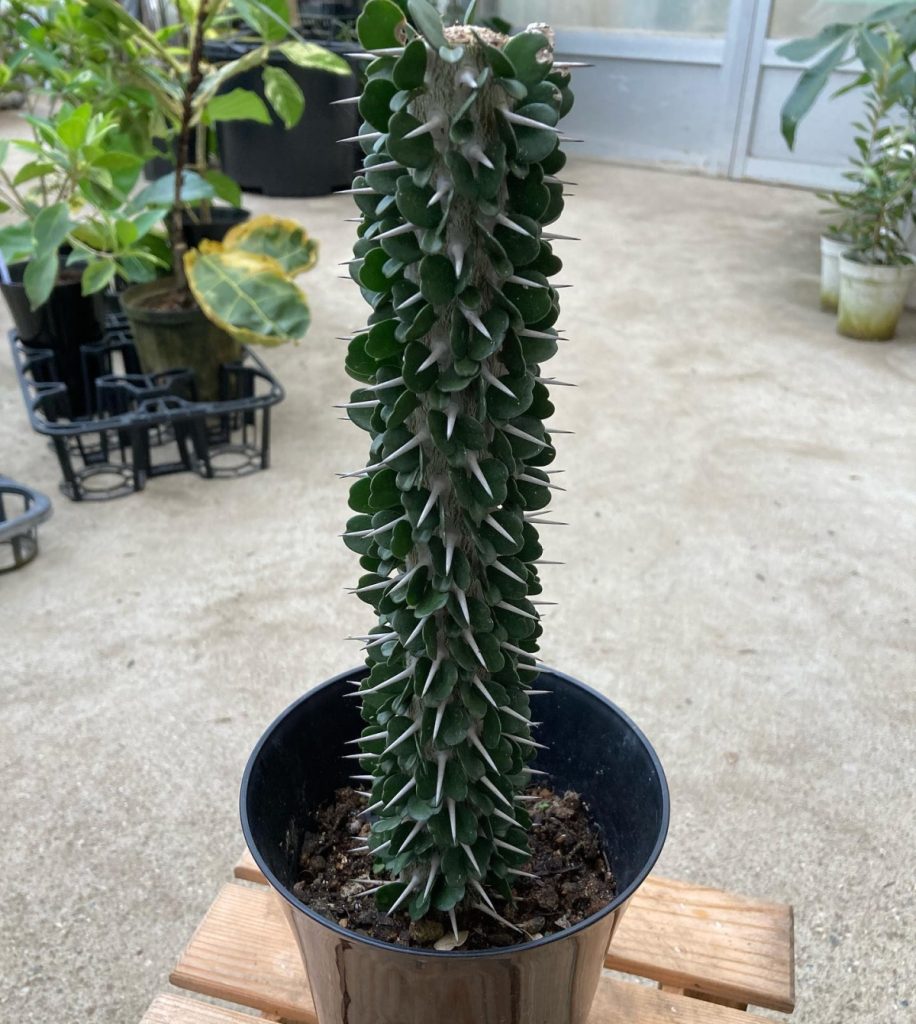Alluaudia ascendens: The Spiky Tree That Looks Like a Mace
Have you ever seen a plant so bizarre and otherworldly that it looks like it came straight out of a sci-fi movie? Well, prepare to have your mind blown by the Alluaudia ascendens – a succulent that defies all expectations! With its massive, spiked trunk resembling a medieval mace and towering height, this plant is an absolute showstopper. Keep reading to discover the weird and wonderful world of this Madagascar native. Trust me, you won’t be disappointed!

Contents
About Alluaudia ascendens
The Alluaudia ascendens is the tallest species in its family, potentially reaching up to 49 feet in height, though it’s usually much smaller. It starts as a single stem but then branches out, forming massive V-shaped crowns that ascend towards the sky. This makes it the largest of all succulent plants in the Didiereaceae family.
You can recognise this species from a distance by its unique “muff-like” inflorescences along the upper branches. The trunk is thick and columnar, up to 12 inches across, with a pith inside arranged in layers. While the branches are few and nearly vertical, sprouting from 6-13 feet up the trunk.
The bark has an amazing texture that resembles unwrinkled elephant skin in shades of dull greenish-brown, reddish or greyish. But the real showstoppers are the blunt, conical spines circling the trunk and leaves in tight, vertical helices. These whitish-grey spines, about 1-2 inches long, give the plant its distinctive mace-like appearance.
The small, fleshy leaves are only 1-2 inches long, with a rounded or heart-shaped form and a notched tip. They’re a deep green color, sometimes with a purple tinge in full sun. As for the flowers, they’re rather unimpressive – dull white to reddish blooms in clusters up to 5 inches long.
Related Post:
1,000 Types Of Succulents [With Pictures]
Alluaudia ascendens Care Requirements
Light
This spiky succulent craves as much sun as you can give it! Aim for 6-8 hours of direct sunlight daily, ideally in the morning. Afternoon sun is okay as long as you provide some shade during the hottest part of the day. Indoors, supplement with a strong grow light.
Water
Like most succulents, the Alluaudia is drought-tolerant and stores water in its thick stem and branches. Allow the soil to fully dry out between waterings, then soak it thoroughly. How often you’ll need to water depends on your environment, but a good rule is every 2-3 weeks in spring/summer and much less frequently in winter.
Soil

This species needs a very well-draining potting mix to prevent rot. A standard succulent/cactus soil mix amended with extra perlite or coarse sand works perfectly. The soil should be loose and gritty to allow excess moisture to escape easily.
Fertilizer
During the growing season, you can fertilize monthly with a balanced fertilizer diluted to 1/4 strength. Too much fertilizer can cause fertilizer burn, so go lightly!
Temperature and Humidity
Native to Madagascar, this plant absolutely loves heat and dryness. Daytime temps of 70-90°F are ideal in spring/summer, while nights can be cooler to around 50°F. Avoid freezing temps at all costs. Low humidity is preferable to prevent rot.
Pests and Problems
The greatest threat is overwatering which can lead to root and stem rot. Inspect plants regularly and let soil dry fully before watering again. Mealybugs, spider mites and scale can also be pests – treat with an insecticidal soap or neem oil spray.

Pruning
Not much pruning is required besides removing any dead branches or leaves. You can trim back the growing tip to encourage bushier growth and branching if desired.
Potting and Repotting
Use a pot with drainage holes and avoid repotting frequently as this can damage the fragile root system. Only repot every 2-3 years in spring into a container 1-2 inches wider.
How to Propagate Alluaudia ascendens
Although slow-growing, you can propagate this unique plant from stem cuttings if you’re patient:
- Take a 6-8 inch cutting from a mature, healthy stem in spring/early summer
- Allow the cutting to callus over for several days before planting
- Dip the cut end in rooting hormone powder
- Plant the cutting vertically in well-draining cactus/succulent potting mix
- Place in warm, bright spot and water sparingly
- Roots and new growth may take several months to emerge
With its striking features and ease of care, the Alluaudia ascendens makes an excellent, jaw-dropping addition to any cacti and succulent lover’s collection. Just be ready for all your friends to ask about “that crazy spiky tree” when they see it!
